Primary Program
(Preschool Ages 3 – 5 & Kindergarten)
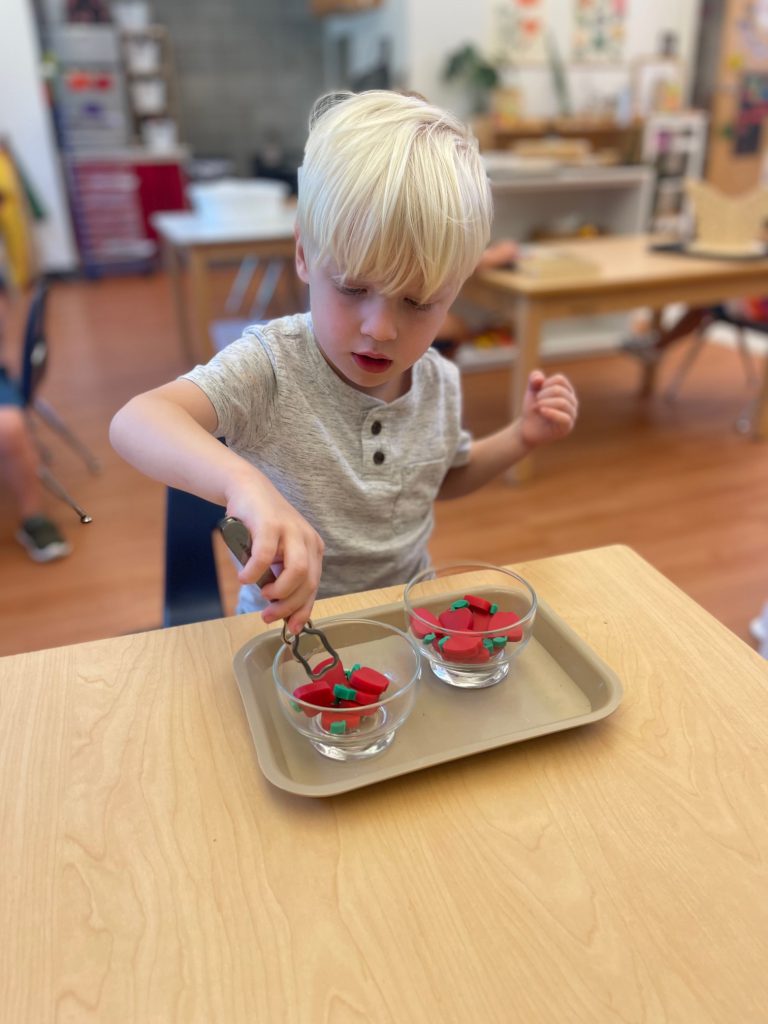
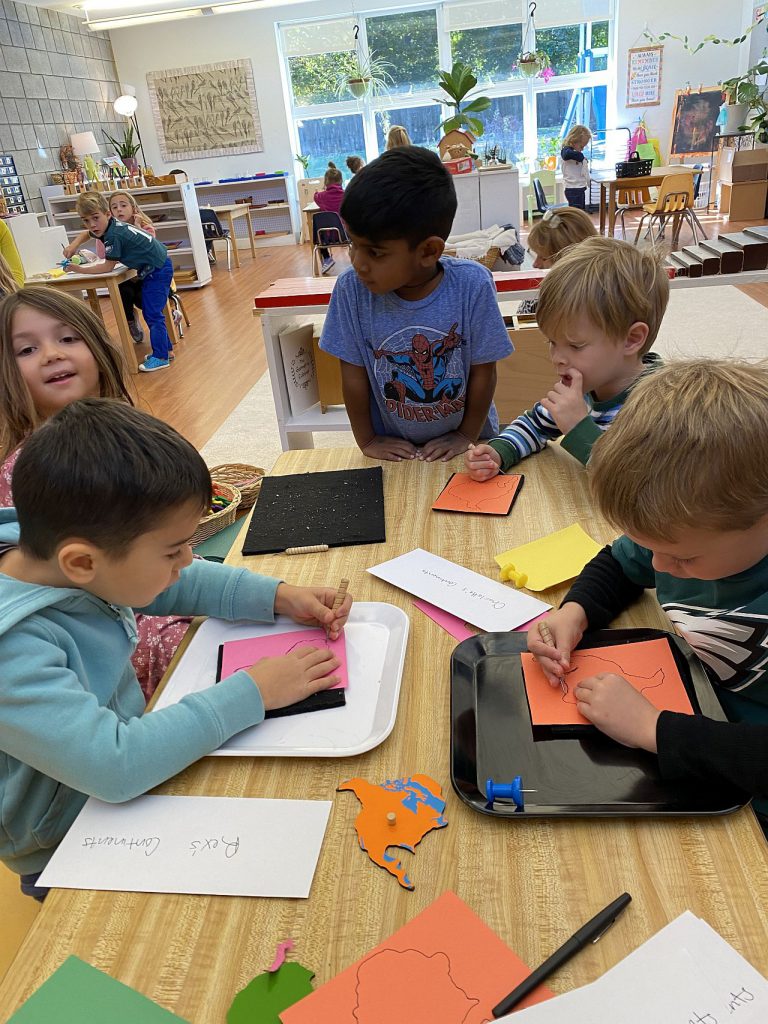
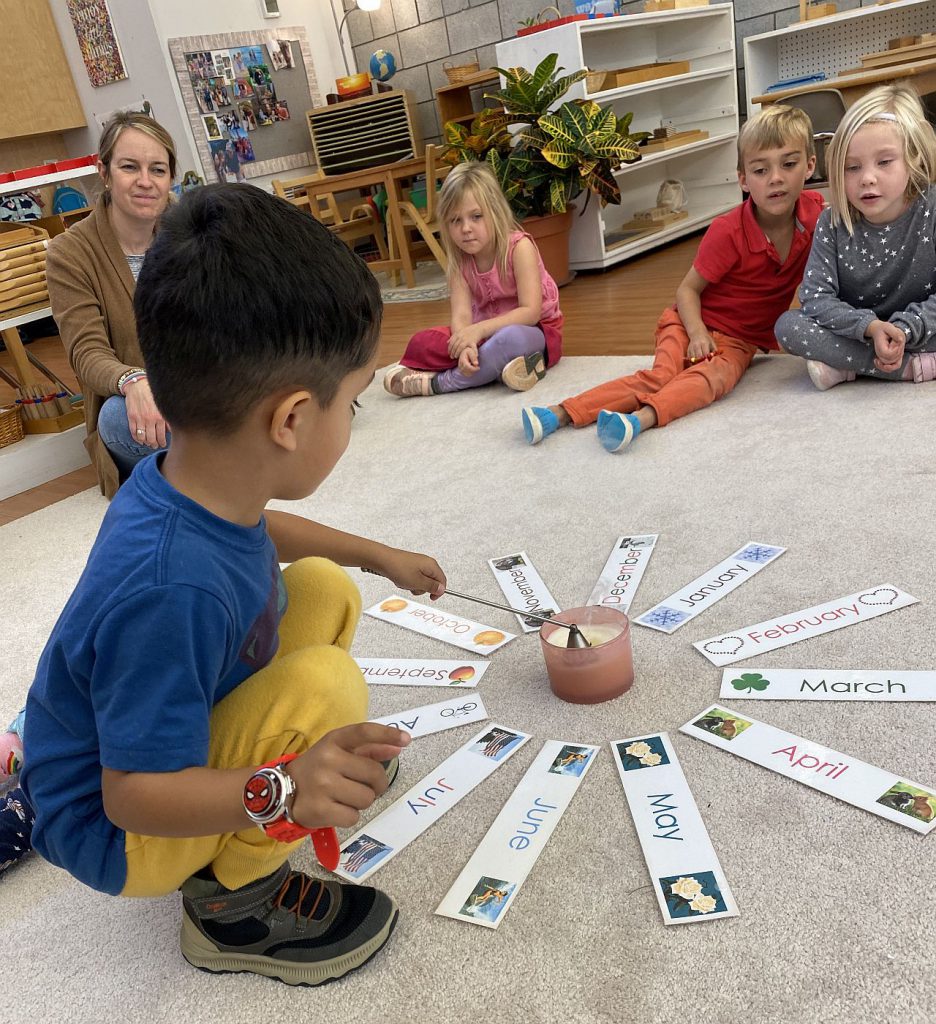
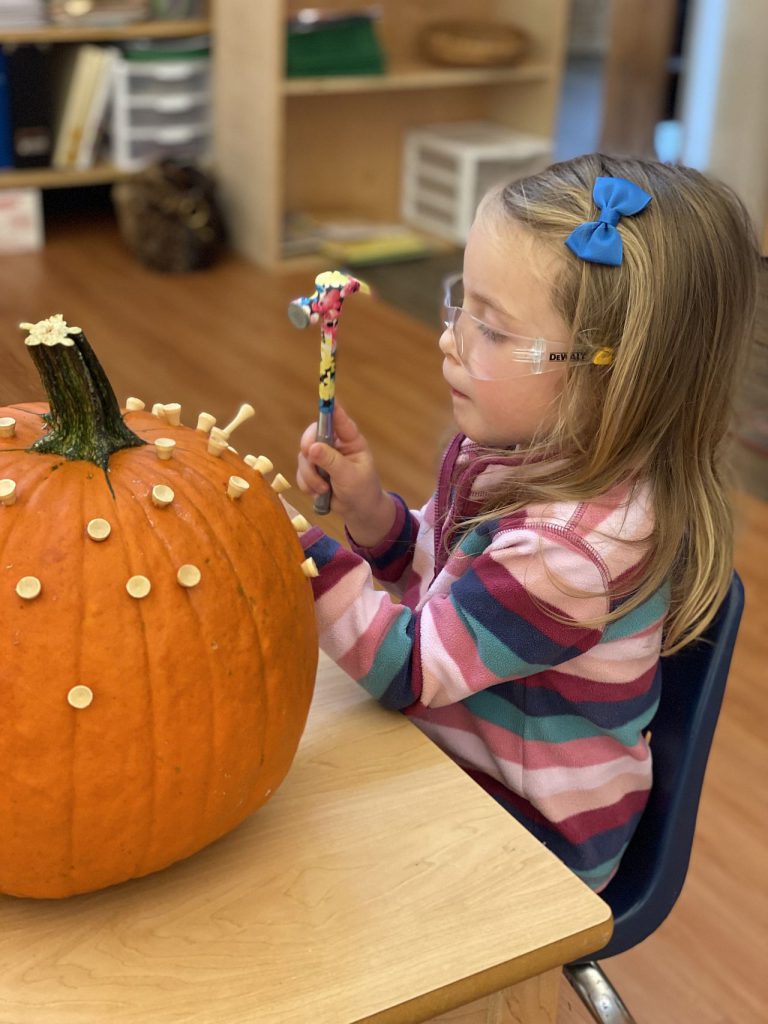
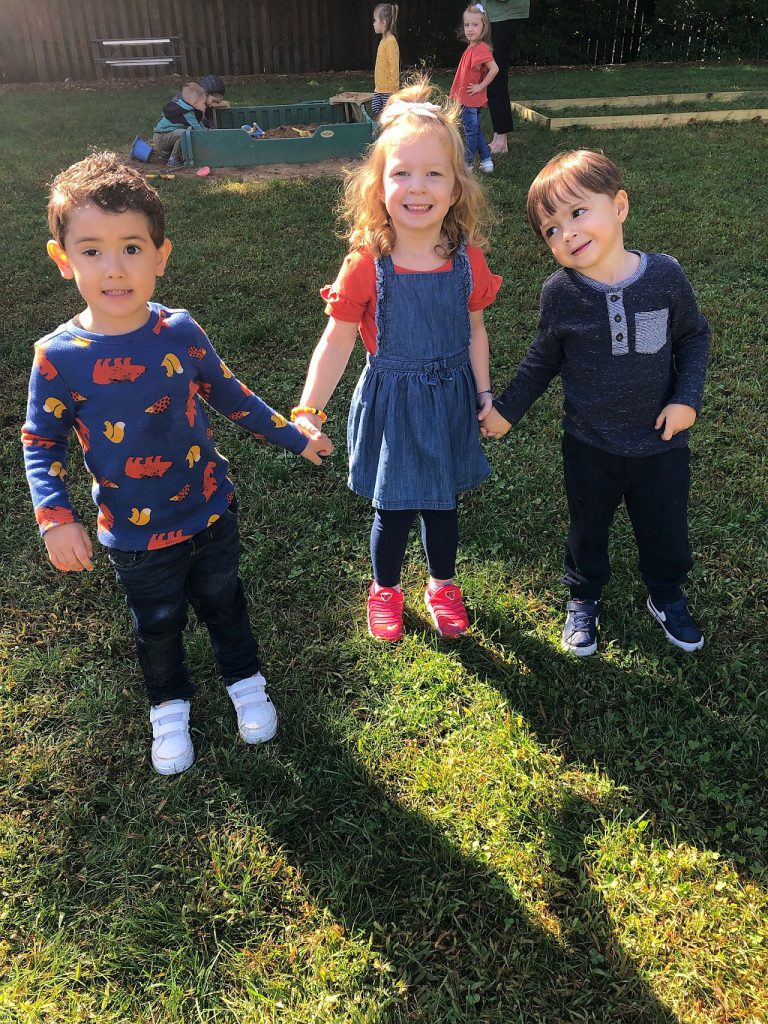
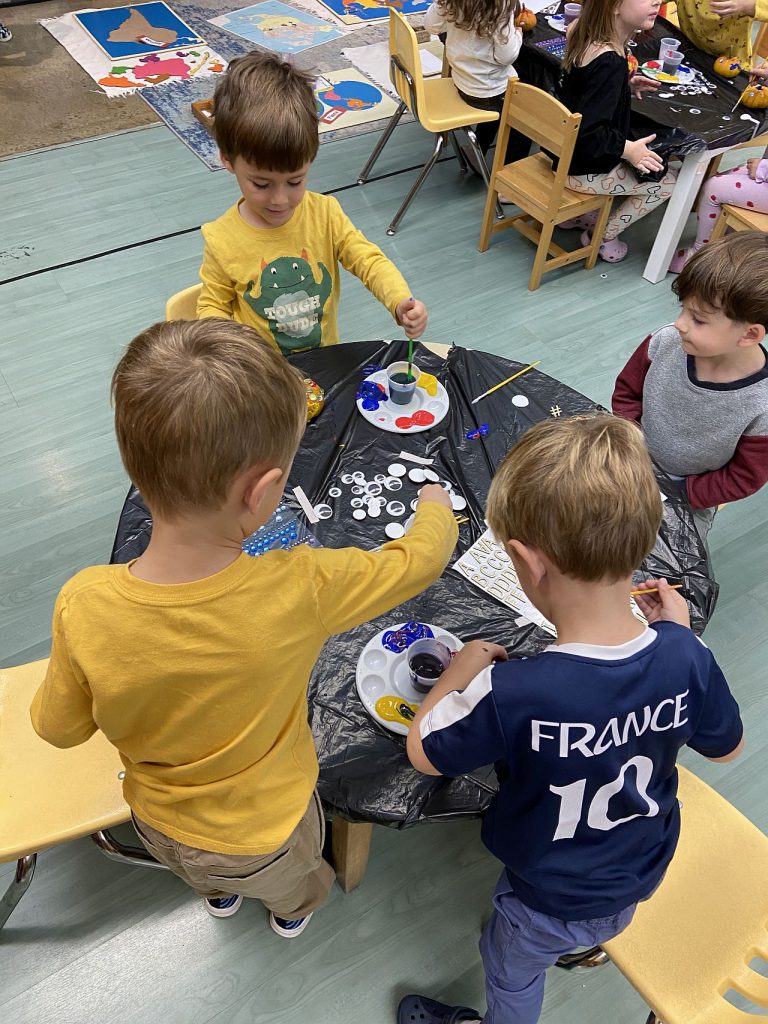
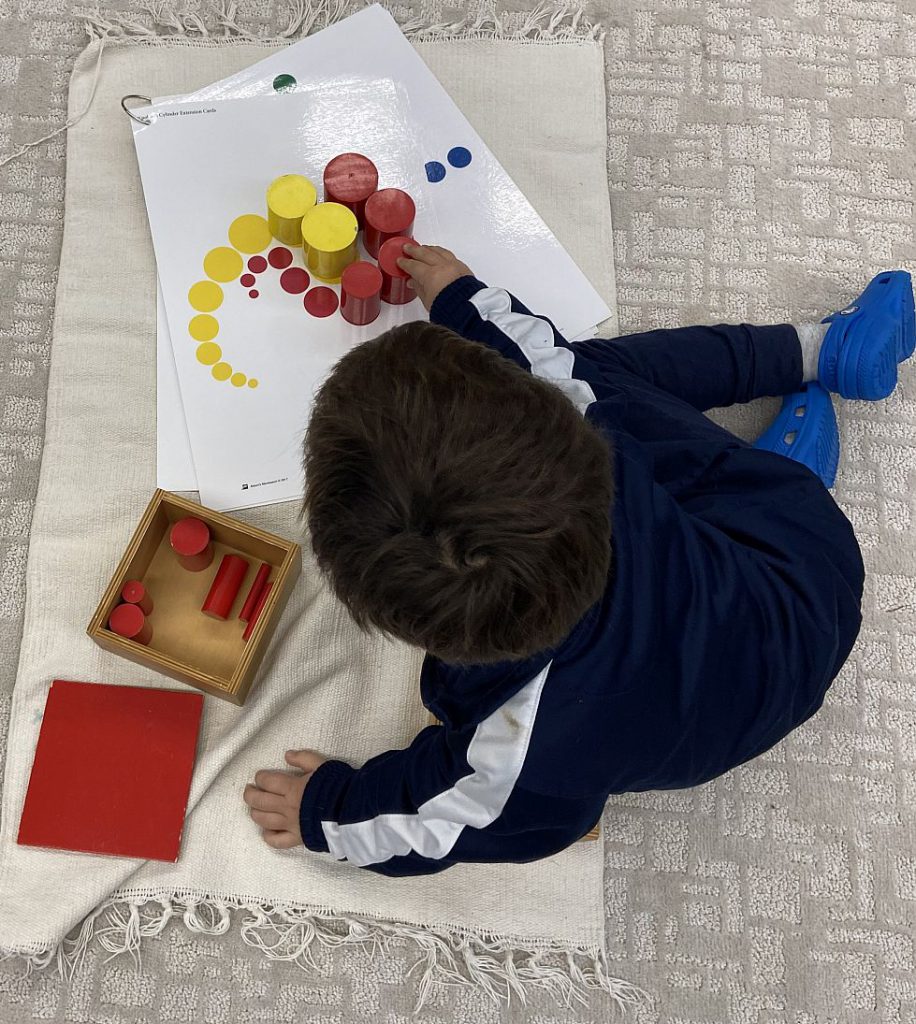
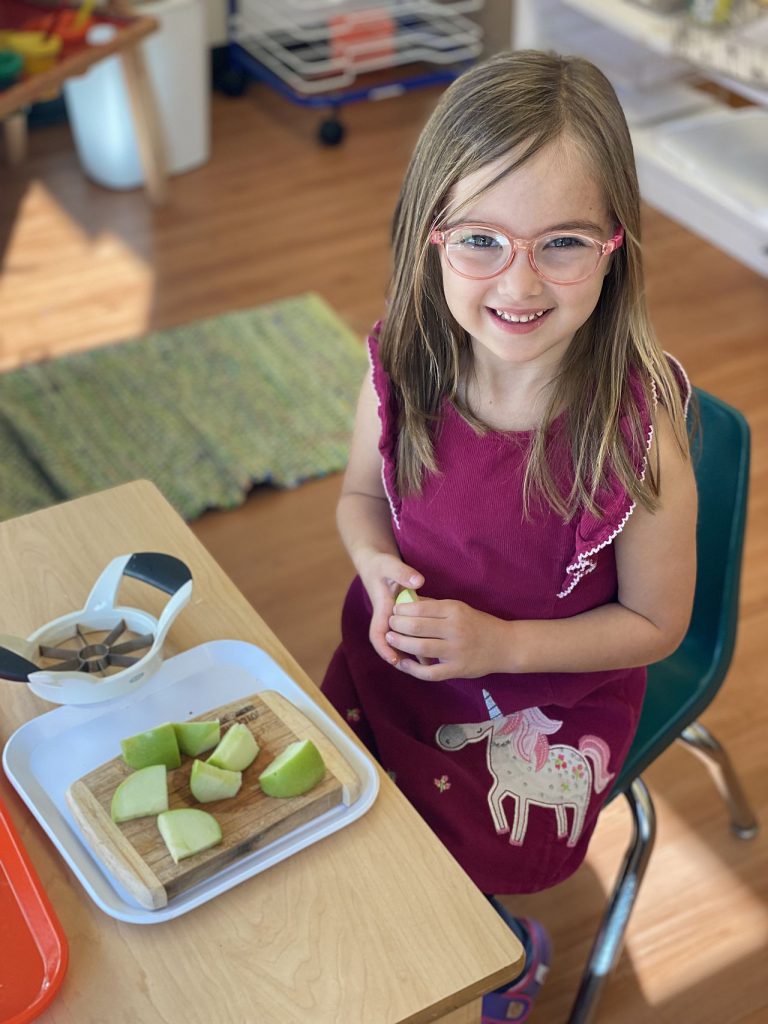
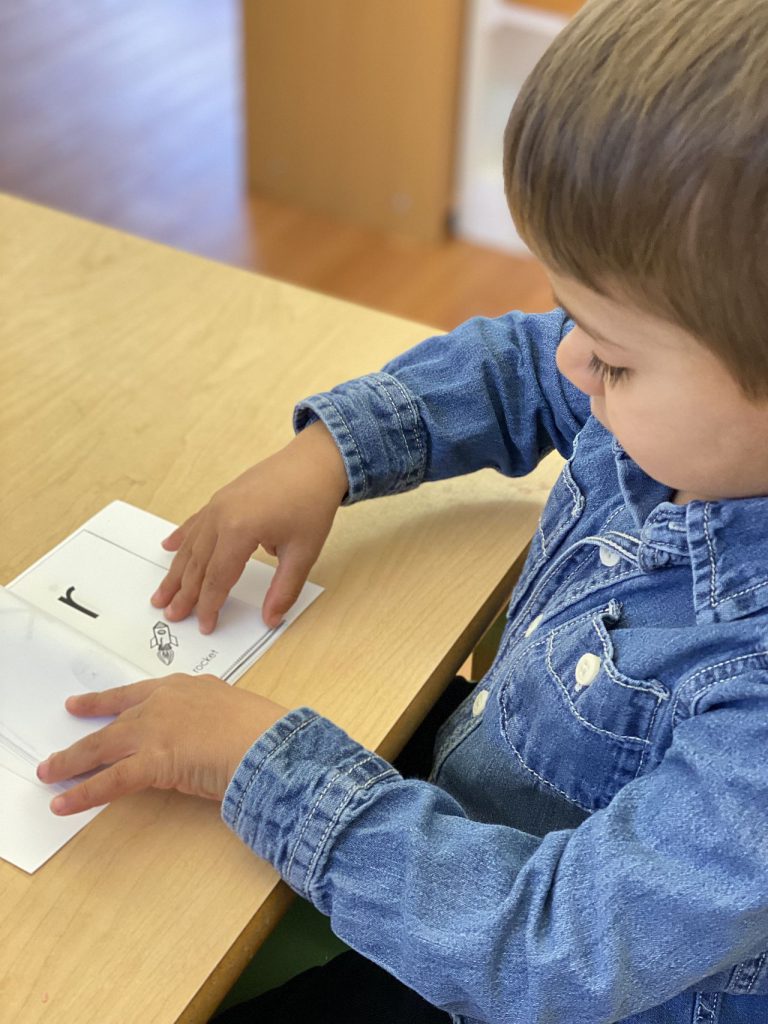
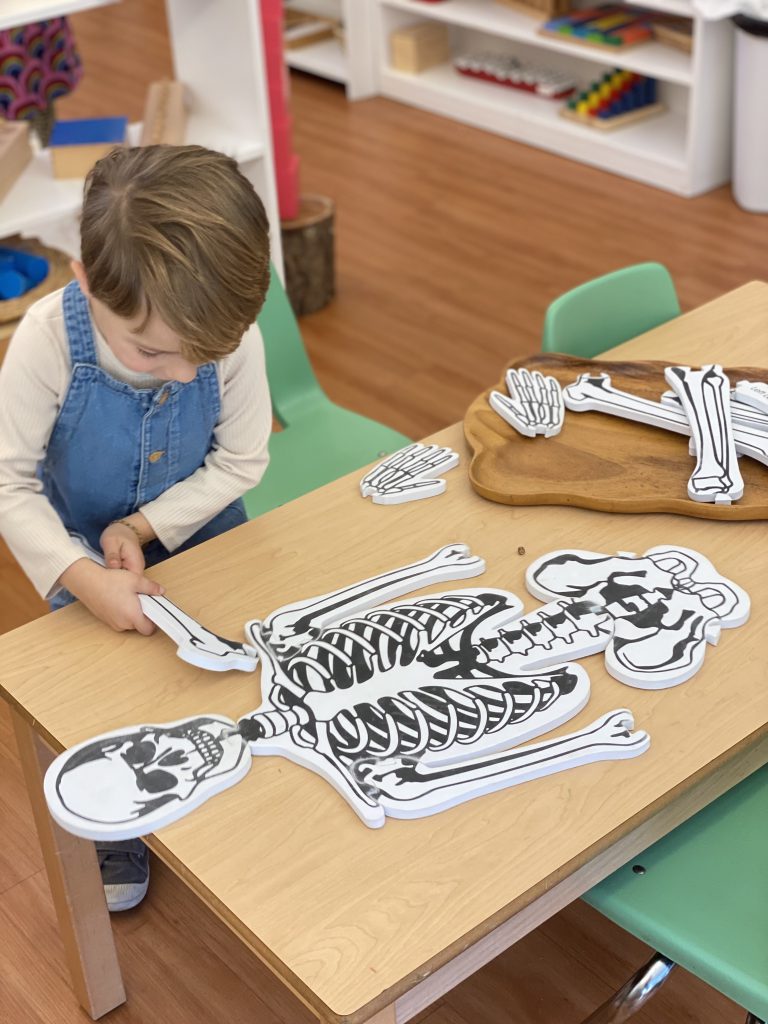
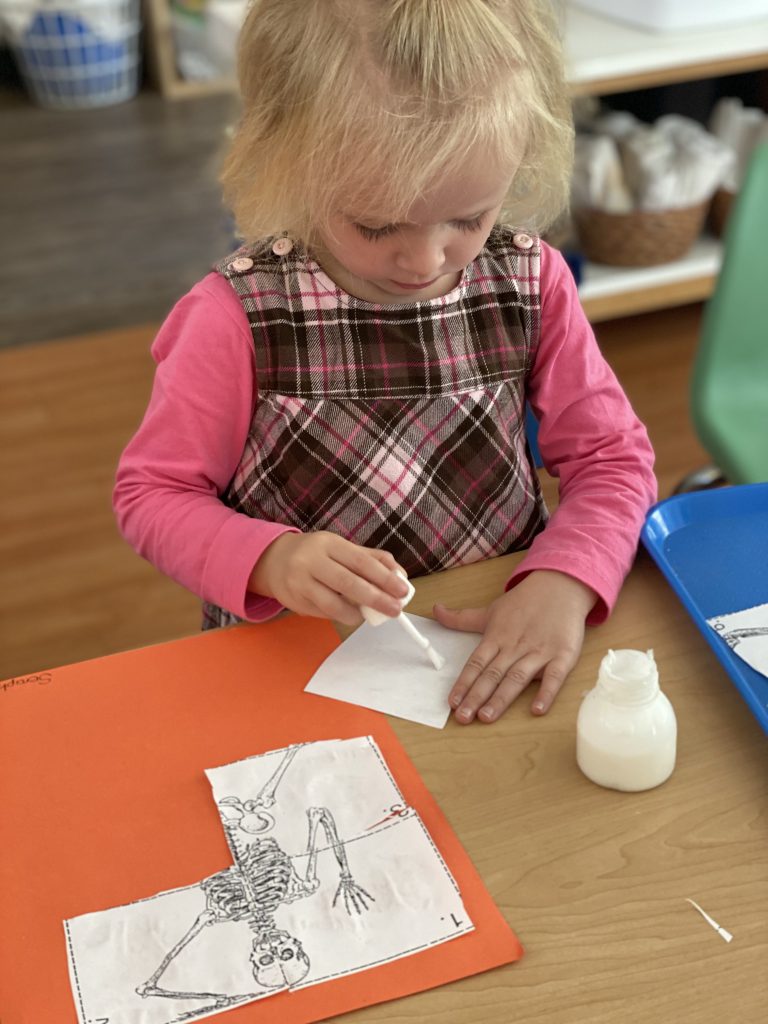


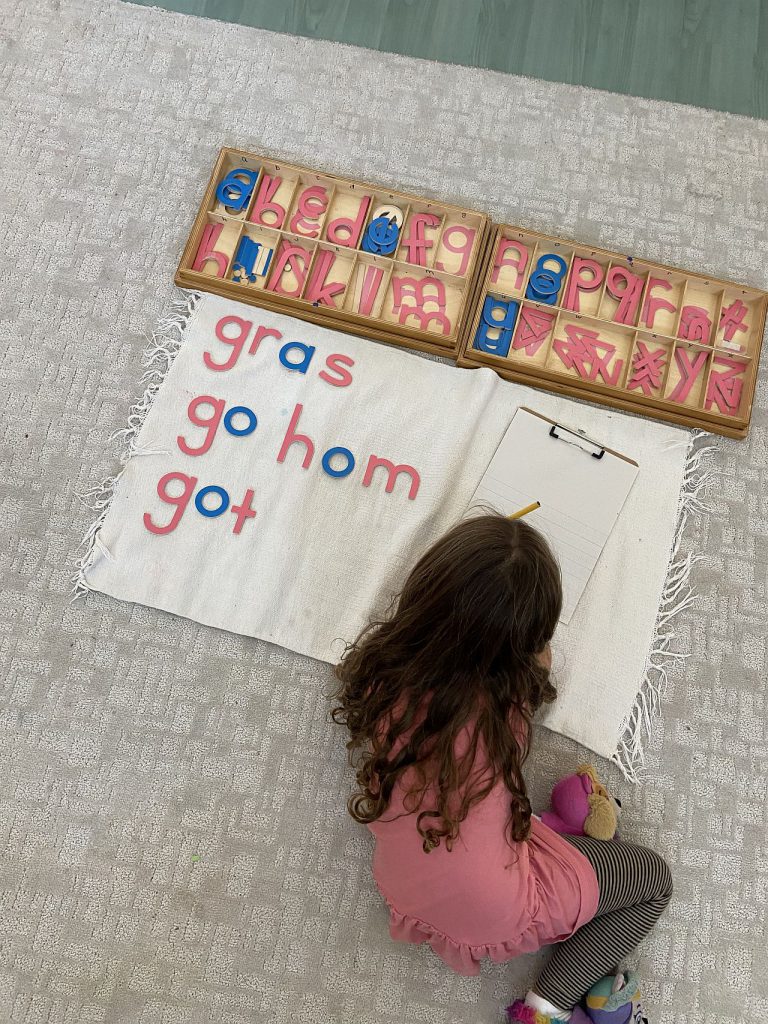
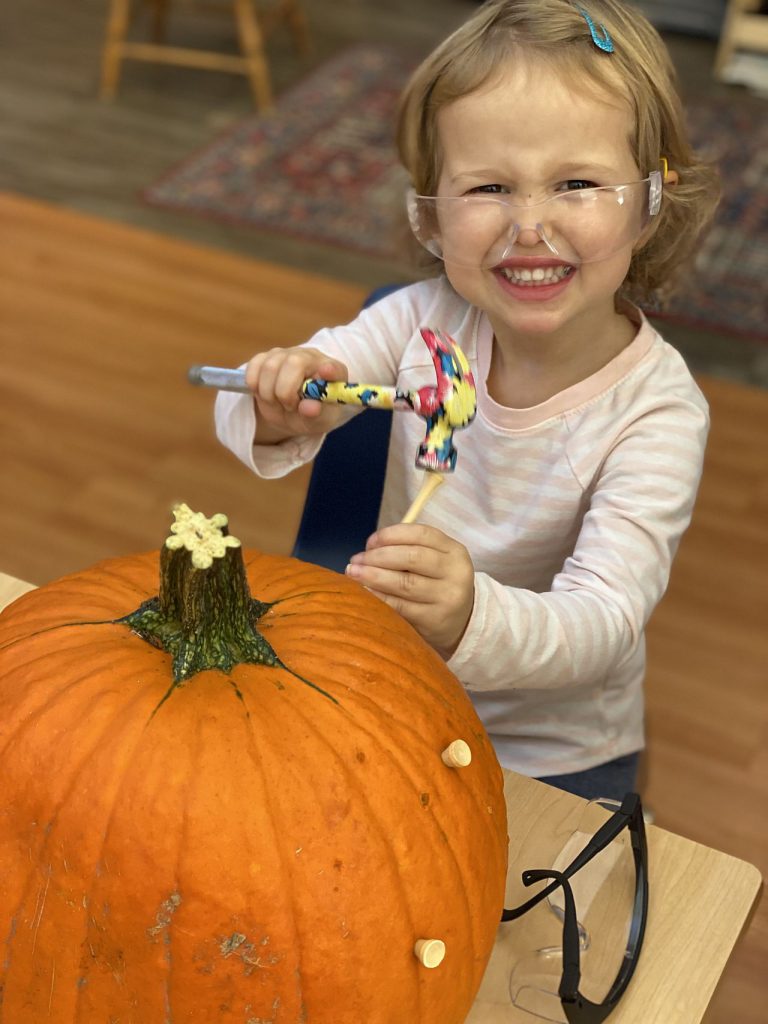
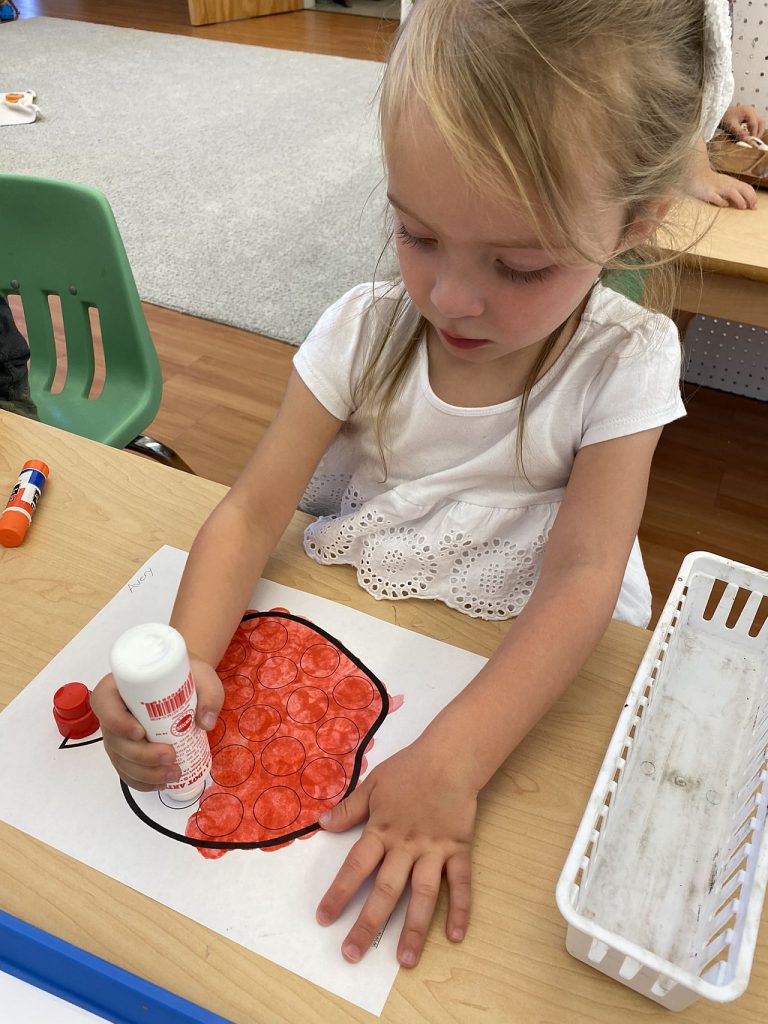
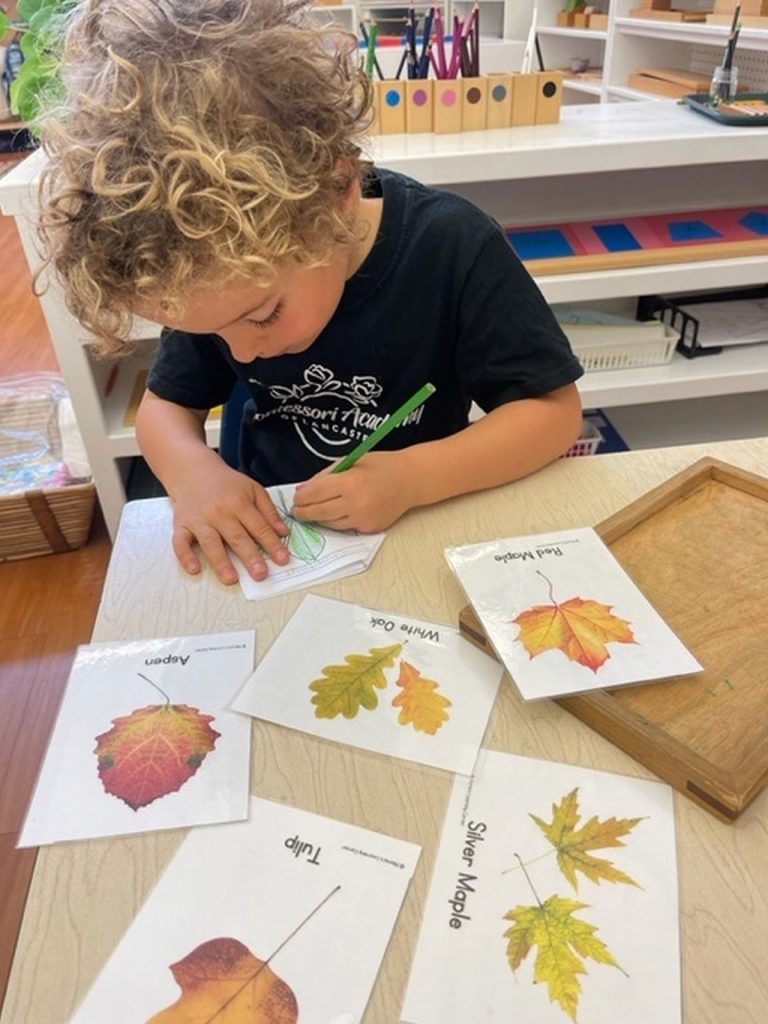
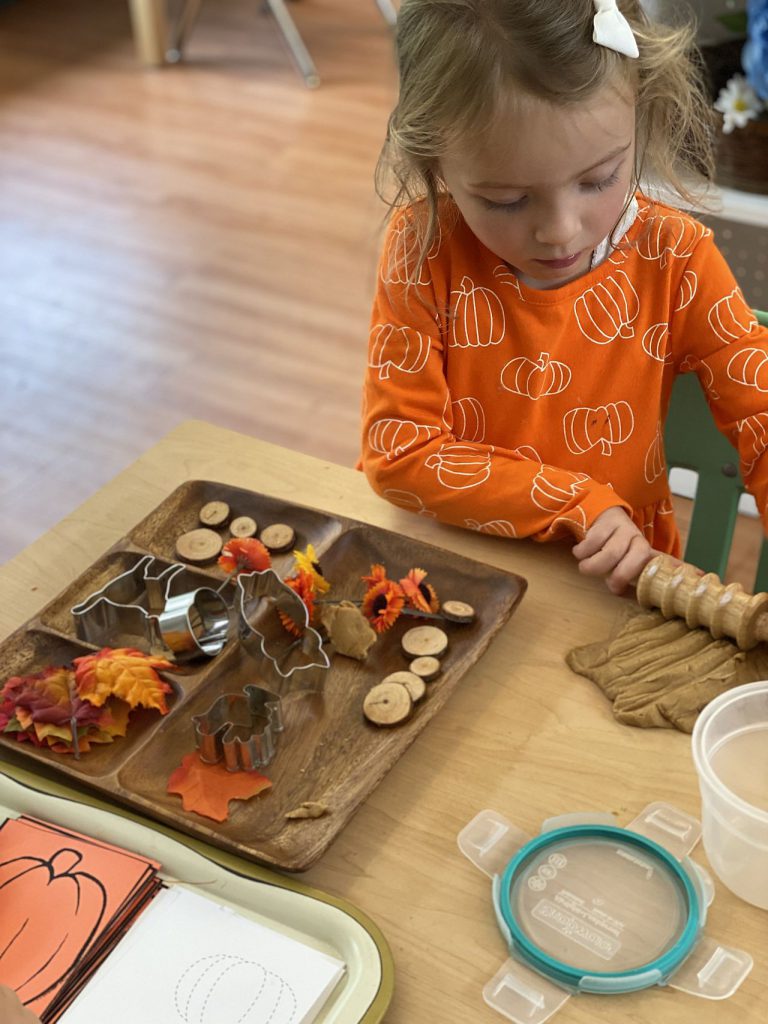

In this child-centered approach the nurturing adult encourages the child’s spontaneous activity, in an environment which is carefully designed and prepared to meet the interests and needs of each child.
The classroom is designed to be more like a home than a school, with the space divided into room-like areas for each curricular area. In this “children’s house” all furniture, tools and utensils are child-scale. Close attention is paid to the organization and maintenance of the environment, so that it is always clean, consistent, and orderly, with flowers, houseplants and decorative items contributing to its aesthetic beauty. As in a home, specialized areas are needed. A “kitchen” area allows children to prepare food and store cleaning supplies and a cozy area offers a place to rest or look at books. An adjacent bathroom also has child-scale fixtures, and direct access to an outdoor garden is highly desirable.
The curriculum is implemented through an extensive array of materials and equipment that are easily accessible to the children on low, open shelves. The classic Montessori materials for this age level are arranged in a logical progression in each curricular area. These materials are exceptionally well-designed, high quality educational manipulatives that encourage concentration and attention, refinement of motor skills, pattern recognition, formation of abstract concepts and development of executive function. An important feature of each material is control of error; success is self-evident to the child when the activity is completed. In addition, the materials permit repetition and practice of each activity until mastery is achieved. Supplemental materials are designed to similar standards of quality and precision.
This prepared environment provides a safe haven for children to explore all aspects of the three-year curriculum at their own pace. The children have the freedom to select the activities of their choice, the right to work with a material for as long as they wish at a table or on a floor mat, and the responsibility for replacing things as they found them. They develop the patience to wait for a material to become available, and they interact with other children and adults throughout the day, seeking adult assistance only as needed.
The curriculum is organized into areas with a particular content focus, but all areas support the development of large and fine motor skills, sustained concentration, a sense of order, individual choice and decision-making, self-regulation, self-confidence, independence, responsibility and cooperation. Most activities involve manipulative materials, and the use of each material is usually first demonstrated by the teacher to individual children. Each activity builds on previous learning, and the teacher presents materials in sequence so that each new challenge for the child represents a small additional challenge and promises a high probability of success. It is expected that children will choose to repeat activities until they have mastered that concept or skill. In all areas, the children proceed through the three-year curriculum at their own pace, with teacher guidance and support. The curriculum includes the following areas:
Daily activities and exercises assist the child in developing functional independence, social awareness, self-confidence and personal dignity by practicing the routine tasks and events of everyday living. Activities involve self-care (e.g. dressing, washing, tooth-brushing), household/classroom maintenance (e.g. dusting, sweeping, scrubbing, polishing, dish-washing, cloth-washing), food preparation and service, gardening, and polite social manners (e.g. greetings, thanks, invitations, apologies). These real-life experiences are a physical and mental preparation for the other areas of the curriculum, as well as an ongoing contribution to the classroom community.
Specialized Montessori materials are designed to engage the child in matching and grading exercises which demand the use of a single isolated sense (sight, hearing, touch, taste, and smell) to consciously discriminate qualities, similarities and differences of size, length, shape, weight, color, sound, tones, smells, and flavors, and to organize the materials accordingly. After the child demonstrates the ability to perceive the varying qualities of the materials, the teacher introduces the vocabulary for these qualities (e.g. large/small, loudest/softest, words for colors and shapes, etc.). These experiences provide an introduction to pattern recognition and classification, and validate the child’s ability to make decisions based on the evidence of the senses, laying the foundation for learning in the academic curricular areas.
Number concepts are introduced using manipulative materials at every stage. Numerals are introduced after the child has experienced the qualitative differences of quantities from 1 to 10. Early exploration of number includes odd and even numbers, and number sets. Place value up to 9,999 is demonstrated using golden bead materials that represent thousand, hundreds, tens and units, allowing children to trade and perform operations with large quantities. Colored bead bars and chains representing the squares and cubes of all the numbers from 1 to 10 offer experiences in linear counting from 1 to 1,000.
Numerical relationships are absorbed at the same time. Additional materials support memorization of basic number facts as children perform simple addition, subtraction, multiplication and division, creating their own tables.
Oral/Auditory/Expressive:
The Montessori environment is language-rich. Teachers model thoughtful, calm speech in all their interactions and children engage in conversations throughout the day. Everyday conversational vocabulary is significantly enlarged with the specific terminology used in the other curriculum areas.
Writing and Reading:
Tracing a variety of simple metal insets and making designs offers children multiple opportunities to develop pencil control before attempting to form letters. Sandpaper letters are then used to introduce the child to tracing the outline of the letter and simultaneously vocalize the most common phonetic sound represented by that letter. Follow-up exercises with movable letters allow the child to form written words and sentences based on analyzing the sounds within each word. At the same time, whole word reading is developed by exercises such as attaching labels to items from a box of objects, or to furnishings in the room. A sequence of exercises follows, including lessons that clarify phonograms and irregular spellings. A small classroom library and carefully selected phonetic readers offer additional reading practice and enjoyment.
Introduction to Grammar: The older children enjoy simple games that emphasize the parts of speech. The differences between a naming word (noun) and doing word (verb) are made clear when the child is asked to bring something or do something. The roles of adjectives and adverbs are clarified when the child is asked to bring a specific colored pencil or to walk in a specific way. Additional exercises are available, introducing grammar symbols for parts of speech, boxes of word cards, and sentence analysis charts.
The cultural curriculum introduces fields of human knowledge and lays a foundation of appreciation and respect for the interdependence of all things, living and non-living. Geography topics start with demonstrations of the differences between land, water and air. Then a variety of land/water forms and simplified globes are used to show the areas of water and land, as well as to introduce the continents on Earth. Puzzle maps for each continent and some countries are used extensively by the children. Further activities introduce flags, artifacts, animals, and pictures from different parts of the world, as well as the solar system. Nature study focuses on local plants, wildlife and pets, as well as gardening. Sets of cards are used to highlight similarities and differences across species and to learn the vocabulary for the external parts of animals and plants. Physical science is experienced throughout the day as children handle a wide variety of materials: wood, metal, glass, water, clay, sand. The geography materials of land, water and air can be revisited as solid, liquid and gas, and specific exercises may introduce concepts such as “sink or float” and magnetism.
Art work is encouraged through the presentation of a variety of tools and media, including pencils, crayons, paintbrushes, watercolors, easel painting, and clay or playdough. In some classrooms prints of works by great artists are discussed and compared. Beautiful framed works of art or photographs are hung on the walls.
Music is a daily experience, as children sing and dance together during group times. Recorded classical music often accompanies transition times and the children are told or read stories about the life and work of the composer. A formal introduction to musical scales and auditory awareness is provided by the Bell material in the Sensorial area.
Walking on the Line – Children walk along a line on the floor, usually in the form of an ellipse. This is an exercise of balance and self-control, and may be accompanied by rhythmic music. With increasing skill levels, the children are invited to carry an object such as a flag or a bell as they walk.
Silence Games – Montessori tells many anecdotes about the fascination of young children for “making silence” together. This exercise in self-control is enhanced by the experience of a communal effort, and by the awareness of other sounds in the environment that are usually unnoticed.
Group Time – At some time during the day the whole group will usually come together, often sitting in a circle on the floor. This is an opportunity for announcements by the teacher(s) or by individual children, and for group singing. The amount of whole group time is very limited, in order to maximize the length of the uninterrupted work period.
Outside time – The optimal Montessori environment has an indoor and an outdoor component. Daily time outdoors is highly valued. When Montessori classrooms have direct access to an outside area, the doors may be opened during the work period in good weather, allowing children to work outside. Many schools also provide gardening, snow-shoveling, leaf sweeping, and other work for the children. The larger outdoor space also provides opportunities for more exuberant large-motor activity and the use of playground structures or natural landscape formations.
Montessori teachers have completed a highly specialized course of training for the age level of the classroom and are viewed as facilitators or guides. The teacher meticulously designs, prepares and maintains the learning environment and introduces children to the uses of the materials with clear and concise demonstration lessons. Most of these brief lessons are presented individually, while the other children in the classroom are working independently, but some lessons may be given to small groups. The teacher stays in the background, observing individuals and the dynamics of the group like an anthropologist. These observations are the basis for a cycle of observation, interpretation, planning, and assessment. The teacher determines which activities to introduce next to each child and the records become a document of the child’s progress. The number of lessons each child receives each week varies accordingly.
Montessori early childhood teachers sometimes work in a teaching team with one or more additional Montessori-credentialed teachers. The resulting opportunities for collegial discourse and shared responsibilities benefit the children as well as the teachers. Schools may also employ classroom assistants as teacher aides.
All adults in the Montessori early childhood environment move gracefully and speak calmly and unobtrusively, taking care to maintain a neutral, non-judgmental stance in interactions with the children, by avoiding praise or any indication of competitive comparisons. The adult aspires to be an authentic model of grace and courtesy at all times, warmly welcoming the children and visitors into the environment, and establishing and maintaining ground-rules for behavior.
Most schools employ classroom assistants who provide support to both teacher and children. The assistant is often trained on the job, though some assistants may have attended training courses or workshops. Sometimes, this position is filled by an intern who is enrolled in a Montessori teacher education program.
An uninterrupted work period is key to ensuring that children have the time to settle into the tasks that interest them, without unnecessary interruptions. The activities of the children demand focus, attention, and concentration, so their activities are referred to as “work” rather than “play.” During the work period, children choose their own activities and may accept invitations to brief individual and small-group lessons from the teacher. Large blocks of time are scheduled to protect this work flow, with the goal of reserving a daily minimum work time approaching three hours and no less than two hours. Freedom of choice, movement, and repetition are fostered throughout the child’s day, while freedom is balanced with responsibility. Whole group activities are scheduled outside the uninterrupted period, and usually include outdoor play, “specials”, group meals, and adult-led group meetings and occasional lessons.